Items Similar to Seductive - Drawing by Mino Maccari - 1940s
Want more images or videos?
Request additional images or videos from the seller
1 of 2
Mino MaccariSeductive - Drawing by Mino Maccari - 1940s1940s
1940s
About the Item
Seductive is a Pencil and Watercolor Drawing realized by Mino Maccari (1924-1989) in the 1940s.
Hand-signed on the lower.
Good condition with foxing.
Mino Maccari (Siena, 1924-Rome, June 16, 1989) was an Italian writer, painter, engraver and journalist, winner of the Feltrinelli Prize for Painting in 1963 and first winner of the Forte dei Marmi Satira Prize in 1973.After completing his secondary education, he enrolls in university. An interventionist like many young people of his time, he took part in the Great War at the age of nineteen as a field artillery officer. At the end of the conflict he resumed his university studies in Siena and in 1920 he graduated in law. In 1924 he was called by Angiolo Bencini to take care of the printing of the magazine Il Selvaggio, openly uncompromising fascist, revolutionary and anti-bourgeois, where his first engravings were published. After a few years of coexistence between work at the newspaper and the law firm, at the beginning of 1926 he left the legal profession to take over the direction of Il Selvaggio which he would hold until 1942. In 1928 he was the author of the small book published by Vallecchi (Florence), Il Trastullo di Strapaese (little songs and engraved woodwinds) which collected fascist songs (the same book was seized several times from Antonio Gramsci during his detention). With the transfer of the editorial staff of the Selvaggio in 1925 from Colle di Val d'Elsa to Florence, Maccari collaborated with Ardengo Soffici, Ottone Rosai and Achille Lega. In the meantime, between 1927 and 1930, he made himself known to the general public as a painter by participating in various national exhibitions. Also in 1930 Maccari works in Turin at La Stampa as editor-in-chief and has the writer Curzio Malaparte as director. His presence in the cultural and editorial world of the fascist regime is very intense, he writes and collaborates with various magazines: Quadrivio, L'Italia Letteraria, L'Italiano and Omnibus by Leo Longanesi; then, during the war, in il Primato di Bottai and, subsequently again, in Il Mondo di Pannunzio (from the first number, in 1949), up to Documento by Federigo Valli. His graphic production is also vast, ranging from the Album of Vallecchi (1925), Il trastullo di Strapaese (1928) to Linoleum (1931). Maccari illustrated in 1934 La vecchia del Bal Bullier by Antonio Baldini and in 1942 he published the Album folder, followed by Come quando fuori Piove and Il superfluo illustrata.For his pictorial work full of evident chromatic accentuations and fast brushstrokes, the violent drawing combined with the lively stroke of the graphic sign of his engravings, he is recognized by critics as a complete artist. In 1962 he was also entrusted with the presidency of the Accademia di San Luca in Rome and managed to obtain a personal exhibition at Gallery 63 in New York. His production of drawings, watercolors, temperas, etc. is endless, sometimes in collaboration with prestigious publishing houses; it is worth mentioning, just as an excellent example, the 32 b/w and color drawings with which he illustrated Il gusto di vivere, a volume that collects writings by Giancarlo Fusco, edited by Natalia Aspesi and published by Laterza in 1985. Maccari, Sienese and great contradaiolo della Torre, painted the Palio of 16 August 1970 won by Selva. In 1973 he was awarded the Political Satire Award of Forte dei Marmi, an award born in that year. He died without great fanfare, in silence, at the age of ninety, in Rome on June 16, 1989.
- Creator:Mino Maccari (1898 - 1989, Italian)
- Creation Year:1940s
- Dimensions:Height: 6.7 in (17 cm)Width: 5.12 in (13 cm)Depth: 0.04 in (1 mm)
- Medium:
- Movement & Style:
- Period:
- Framing:Framing Options Available
- Condition:Insurance may be requested by customers as additional service, contact us for more information.a.
- Gallery Location:Roma, IT
- Reference Number:
About the Seller
4.9
Platinum Seller
These expertly vetted sellers are 1stDibs' most experienced sellers and are rated highest by our customers.
1stDibs seller since 2017
6,732 sales on 1stDibs
Typical response time: 2 hours
- ShippingRetrieving quote...Ships From: Grasse, France
- Return PolicyA return for this item may be initiated within 14 days of delivery.
More From This SellerView All
- Interior of The Church - Original Drawing by Rémy Hetreau - 1930sLocated in Roma, ITInterior of The Church is an original Artwork realized by Remy Hetreau (1913-2001). Realized with pencil, and watercolor on cardboard. in good condition.Category
1930s Modern Interior Drawings and Watercolors
MaterialsWatercolor, Pencil
- The Angels Captured City - Drawing by Mino Maccari - Mid-20th CenturyBy Mino MaccariLocated in Roma, ITThe Angels Captured City is an Original Drawing in watercolor and pencil on creamy-colored paper realized by Mino Maccari in the mid-20th century. Hand-signed by the artist on the l...Category
Mid-20th Century Modern Figurative Drawings and Watercolors
MaterialsWatercolor, Carbon Pencil
- You Girl - Original Drawing by Alfred Grévin - Late 19 CenturyBy Alfred GrevinLocated in Roma, ITYou Girl is an original drawing in Mixed media realized by Alfred Grévin in the Late-19 Century In good conditions. Alfred Grévin (1827- 1892), was a 19th-century caricaturist, be...Category
Late 19th Century Modern Figurative Drawings and Watercolors
MaterialsWatercolor, Pencil
- Sacred Scene - Ink and Watercolor Drawing - Early 20th CenturyLocated in Roma, ITSacred Scene is a modern artwork realized by Artist of the early 20th Century. Mixed colored ink and watercolor. Includes frame:36.5 x 28 cmCategory
Early 20th Century Modern Figurative Drawings and Watercolors
MaterialsInk, Watercolor, Pencil
- The Sun and the Earth - Drawing in Pencil and Watercolor - Early 20th centuryBy Gustave BourgogneLocated in Roma, ITThe Sun and the Earth is an original Drawing in watercolor and pencil on ivory-colored paper realized by Gustave Bourgogne in the early 20th century. Good conditions. The artwork h...Category
Early 20th Century Modern Landscape Drawings and Watercolors
MaterialsPencil, Watercolor
- The Cashier - Drawing by Mino Maccari - 1970sBy Mino MaccariLocated in Roma, ITThe Cashier is a Pencil and watercolor Drawing realized by Mino Maccari (1924-1989) in the 1970s. Hand-signed on the lower. Good conditions. Mino Maccari (Siena, 1924-Rome, June ...Category
1970s Modern Figurative Drawings and Watercolors
MaterialsPencil, Watercolor
You May Also Like
- BYE BYE BIRDIE Original 1960 Broadway Musical Costume Drawing Tony Award ElvisLocated in New York, NYBYE BYE BIRDIE Original 1960 Broadway Musical Costume Drawing Tony Award Elvis. Miles White (1915 – 2000) BYE BYE BIRDIE 11 x 8 inches Mixed Media on...Category
1960s American Modern Figurative Drawings and Watercolors
MaterialsWatercolor, Gouache, Pencil
- Women's Corner, Along the Cuyahoga River, Early 20th Century Cleveland SchoolBy Frank WilcoxLocated in Beachwood, OHFrank Nelson Wilcox (American, 1887-1964) Women's Corner, Along the Cuyahoga River, c. 1916 Watercolor and graphite on paper 21 x 29 inches Frank Nelson Wilcox (October 3, 1887 – April 17, 1964) was a modernist American artist and a master of watercolor. Wilcox is described as the "Dean of Cleveland School painters," though some sources give this appellation to Henry Keller or Frederick Gottwald. Wilcox was born on October 3, 1887 to Frank Nelson Wilcox, Sr. and Jessie Fremont Snow Wilcox at 61 Linwood Street in Cleveland, Ohio. His father, a prominent lawyer, died at home in 1904 shortly before Wilcox' 17th birthday. His brother, lawyer and publisher Owen N. Wilcox, was president of the Gates Legal Publishing Company or The Gates Press. His sister Ruth Wilcox was a respected librarian. In 1906 Wilcox enrolled from the Cleveland School of Art under the tutelage of Henry Keller, Louis Rorimer, and Frederick Gottwald. He also attended Keller's Berlin Heights summer school from 1909. After graduating in 1910, Wilcox traveled and studied in Europe, sometimes dropping by Académie Colarossi in the evening to sketch the model or the other students at their easels, where he was influenced by French impressionism. Wilcox was influenced by Keller's innovative watercolor techniques, and from 1910 to 1916 they experimented together with impressionism and post-impressionism. Wilcox soon developed his own signature style in the American Scene or Regionalist tradition of the early 20th century. He joined the Cleveland School of Art faculty in 1913. Among his students were Lawrence Edwin Blazey, Carl Gaertner, Paul Travis, and Charles E. Burchfield. Around this time Wilcox became associated with Cowan Pottery. In 1916 Wilcox married fellow artist Florence Bard, and they spent most of their honeymoon painting in Berlin Heights with Keller. They had one daughter, Mary. In 1918 he joined the Cleveland Society of Artists, a conservative counter to the Bohemian Kokoon Arts Club, and would later serve as its president. He also began teaching night school at the John Huntington Polytechnic Institute at this time, and taught briefly at Baldwin-Wallace College. Wilcox wrote and illustrated Ohio Indian Trails in 1933, which was favorably reviewed by the New York Times in 1934. This book was edited and reprinted in 1970 by William A. McGill. McGill also edited and reprinted Wilcox' Canals of the Old Northwest in 1969. Wilcox also wrote, illustrated, and published Weather Wisdom in 1949, a limited edition (50 copies) of twenty-four serigraphs (silk screen prints) accompanied by commentary "based upon familiar weather observations commonly made by people living in the country." Wilcox displayed over 250 works at Cleveland's annual May Show. He received numerous awards, including the Penton Medal for as The Omnibus, Paris (1920), Fish Tug on Lake Erie (1921), Blacksmith Shop (1922), and The Gravel Pit (1922). Other paintings include The Trailing Fog (1929), Under the Big Top (1930), and Ohio Landscape...Category
1910s American Modern Figurative Drawings and Watercolors
MaterialsGraphite, Watercolor
- Cows by Woodland Pond, Toledo, Ohio, Early 20th Century Cleveland SchoolBy Frank WilcoxLocated in Beachwood, OHFrank Nelson Wilcox (American, 1887-1964) Cows by Woodland Pond, Toledo, Ohio, c. 1920 Watercolor and graphite on board Signed lower right 22 x 30 inches Frank Nelson Wilcox (October 3, 1887 – April 17, 1964) was a modernist American artist and a master of watercolor. Wilcox is described as the "Dean of Cleveland School painters," though some sources give this appellation to Henry Keller or Frederick Gottwald. Wilcox was born on October 3, 1887 to Frank Nelson Wilcox, Sr. and Jessie Fremont Snow Wilcox at 61 Linwood Street in Cleveland, Ohio. His father, a prominent lawyer, died at home in 1904 shortly before Wilcox' 17th birthday. His brother, lawyer and publisher Owen N. Wilcox, was president of the Gates Legal Publishing Company or The Gates Press. His sister Ruth Wilcox was a respected librarian. In 1906 Wilcox enrolled from the Cleveland School of Art under the tutelage of Henry Keller, Louis Rorimer, and Frederick Gottwald. He also attended Keller's Berlin Heights summer school from 1909. After graduating in 1910, Wilcox traveled and studied in Europe, sometimes dropping by Académie Colarossi in the evening to sketch the model or the other students at their easels, where he was influenced by French impressionism. Wilcox was influenced by Keller's innovative watercolor techniques, and from 1910 to 1916 they experimented together with impressionism and post-impressionism. Wilcox soon developed his own signature style in the American Scene or Regionalist tradition of the early 20th century. He joined the Cleveland School of Art faculty in 1913. Among his students were Lawrence Edwin Blazey, Carl Gaertner, Paul Travis, and Charles E. Burchfield. Around this time Wilcox became associated with Cowan Pottery. In 1916 Wilcox married fellow artist Florence Bard, and they spent most of their honeymoon painting in Berlin Heights with Keller. They had one daughter, Mary. In 1918 he joined the Cleveland Society of Artists, a conservative counter to the Bohemian Kokoon Arts Club, and would later serve as its president. He also began teaching night school at the John Huntington Polytechnic Institute at this time, and taught briefly at Baldwin-Wallace College. Wilcox wrote and illustrated Ohio Indian Trails in 1933, which was favorably reviewed by the New York Times in 1934. This book was edited and reprinted in 1970 by William A. McGill. McGill also edited and reprinted Wilcox' Canals of the Old Northwest in 1969. Wilcox also wrote, illustrated, and published Weather Wisdom in 1949, a limited edition (50 copies) of twenty-four serigraphs (silk screen prints) accompanied by commentary "based upon familiar weather observations commonly made by people living in the country." Wilcox displayed over 250 works at Cleveland's annual May Show. He received numerous awards, including the Penton Medal for as The Omnibus, Paris (1920), Fish Tug on Lake Erie (1921), Blacksmith Shop (1922), and The Gravel Pit (1922). Other paintings include The Trailing Fog (1929), Under the Big Top (1930), and Ohio Landscape...Category
1920s American Modern Figurative Drawings and Watercolors
MaterialsWatercolor, Graphite
- Untitled (Reclining Woman)By Malvin Marr AlbrightLocated in Chicago, ILA 1933 watercolor of a reclining woman in a red dress, by Malvin Marr Albright (Zsissily), the identical twin of artist Ivan Albright and son of artist Adam Le Lorraine Albright. Al...Category
1930s American Modern Figurative Drawings and Watercolors
MaterialsWatercolor, Graphite
- The Endeavour.By Arthur John Trevor BriscoeLocated in Storrs, CTThe Endeavour. c.1935. Pencil and watercolor on watercolor board. 14 3/8 x 20 7/8. Signed in pencil, lower right; titled in pencil, verso. Housed in a subtle 23 1/2 x 36-inch light ...Category
1930s Modern Landscape Drawings and Watercolors
MaterialsPencil, Watercolor
- [untitled] Street Scene with Fruit Vendor.By Emilio SanchezLocated in New York, NYEmilio Sanchez (1921-1999) created [untitled] “STREET SCENE WITH FRUIT VENDOR” in circa 1950. This unsigned watercolor and came to us directly from the Sanchez estate. It is stamped on the verso "Estate of Emilio Sanchez." This piece is in good to very good condition and painted to the paper's edge. The paper size is 14.88 x 15.25 inches (37.6 x 38.6 cm). “Best known for his architectural paintings and lithographs, Emilio Sanchez (1921-1999) explored the effects of light and shadow to emphasize the abstract geometry of his subjects. His artwork encompasses his Cuban heritage...Category
1950s American Modern Figurative Drawings and Watercolors
MaterialsWatercolor, Graphite
Recently Viewed
View AllMore Ways To Browse
Watercolour Paintings Realism
Vintage Pen And Ink Art
Vintage Pen And Ink Drawing
Vintage Pen And Ink Drawings
Vintage Pencil Sketches
Vintage Pens Pencils
Vintage Ship Drawing
Vintage Ship Drawings
Vintage Pens And Pencils
Latin America Watercolor
Charcoal Figural Drawing
Oriental Watercolor Paintings
Hand Signed Drawing 19th Century
Vintage Pen And Ink Illustration
Impressionist Charcoal Drawing
Pencil Drawings Costumes
Watercolor Silhouettes
Italia War
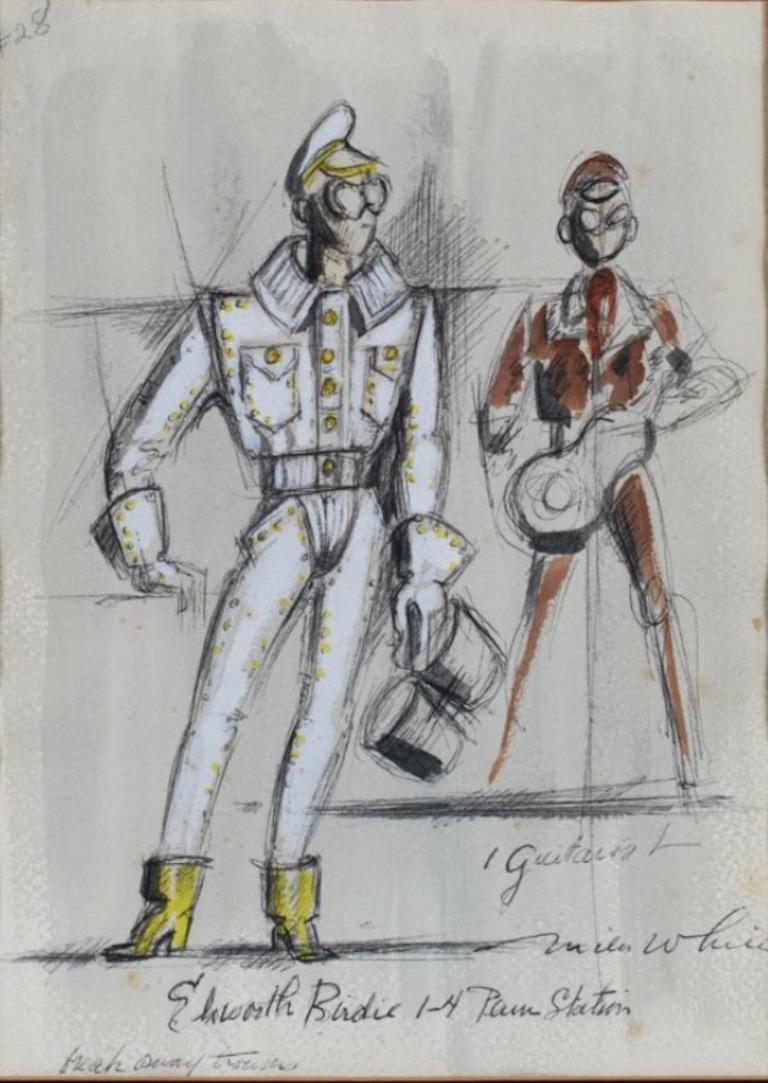
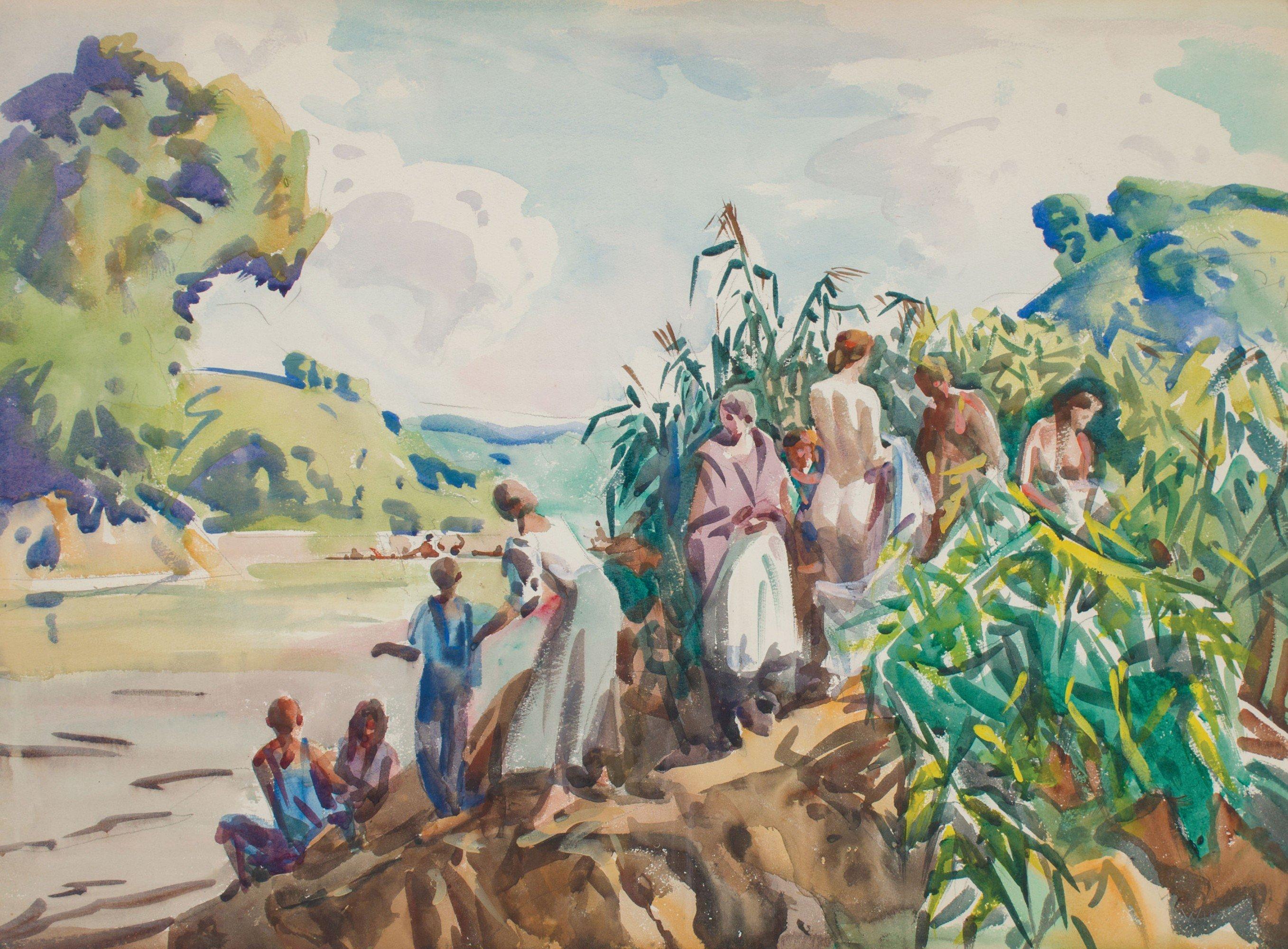
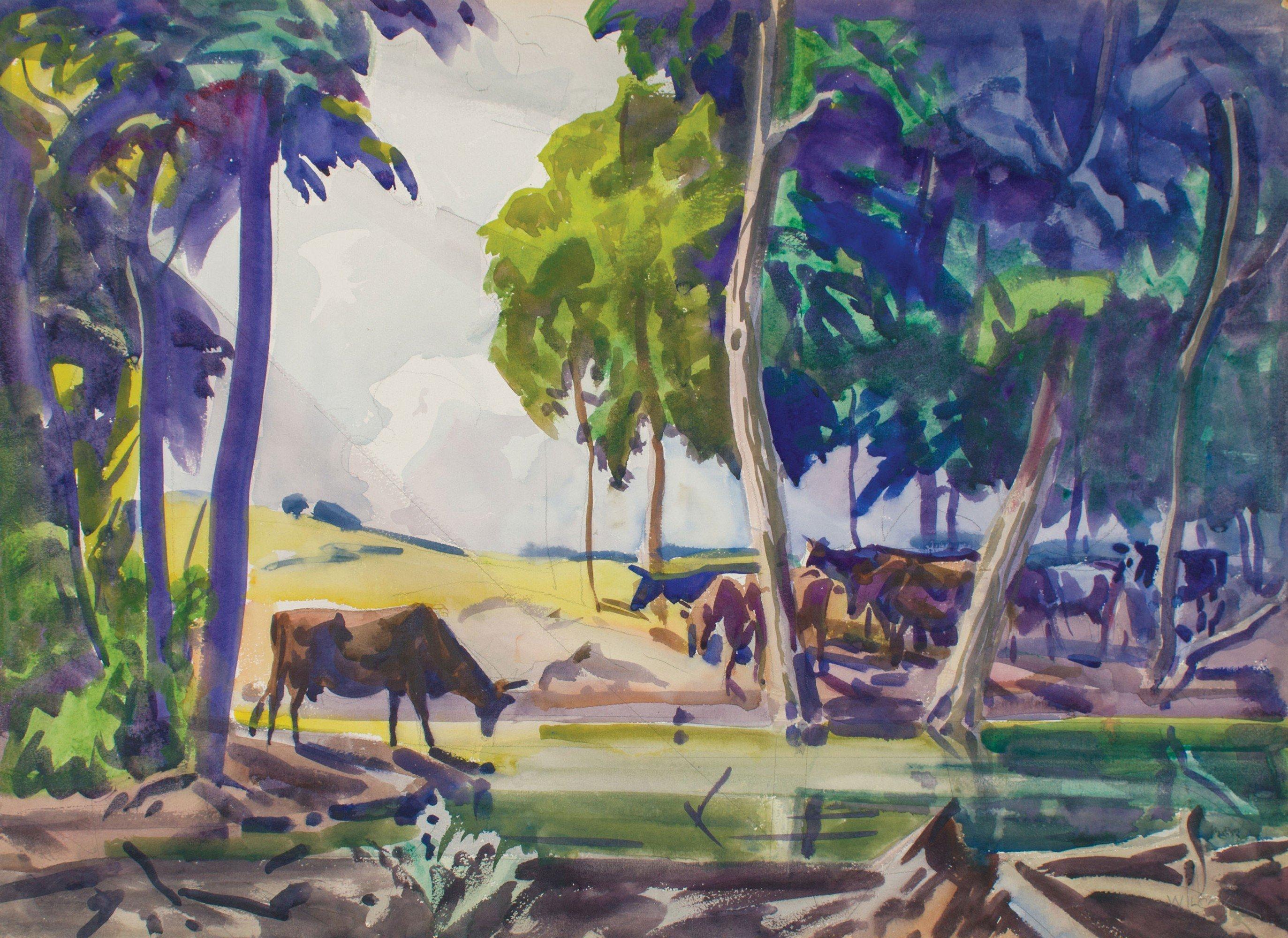
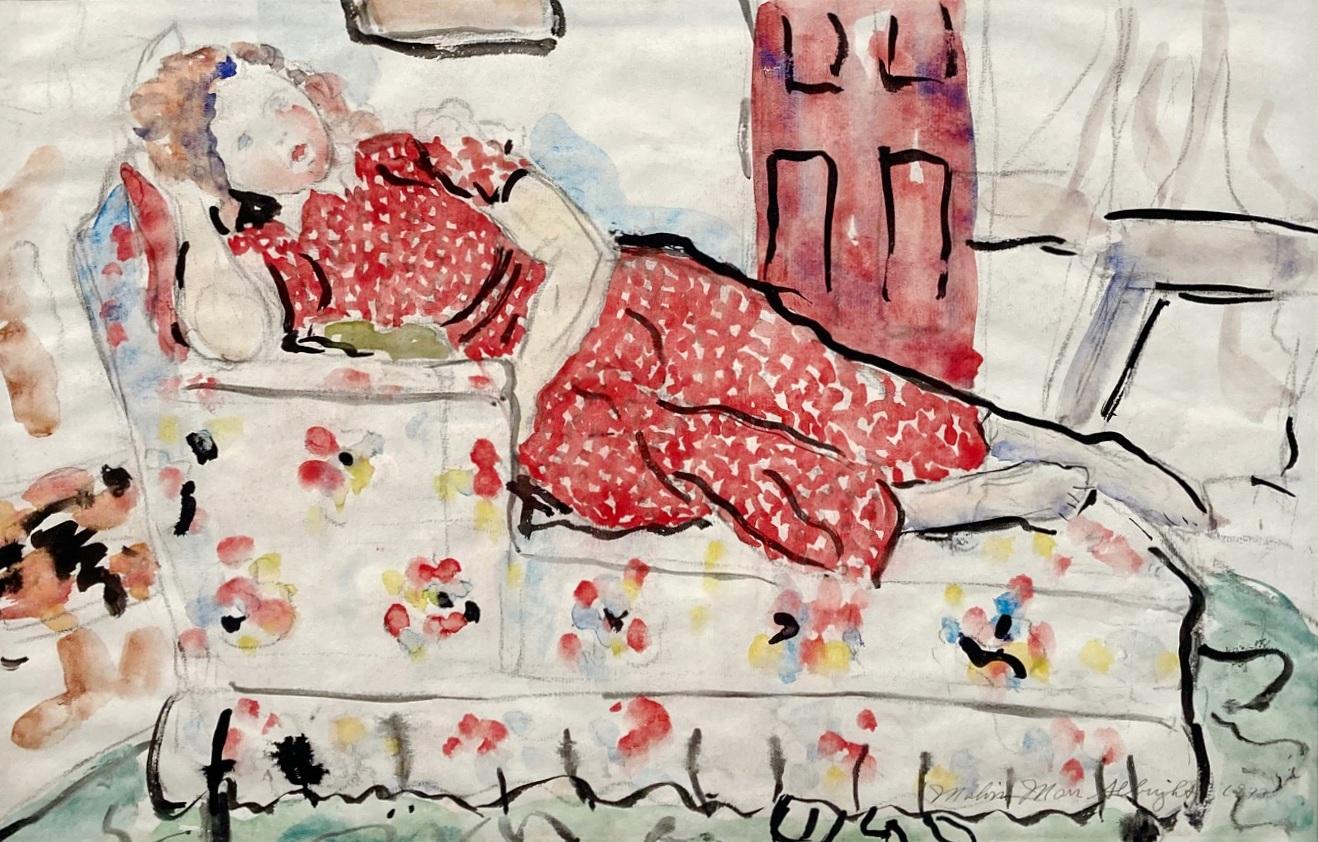
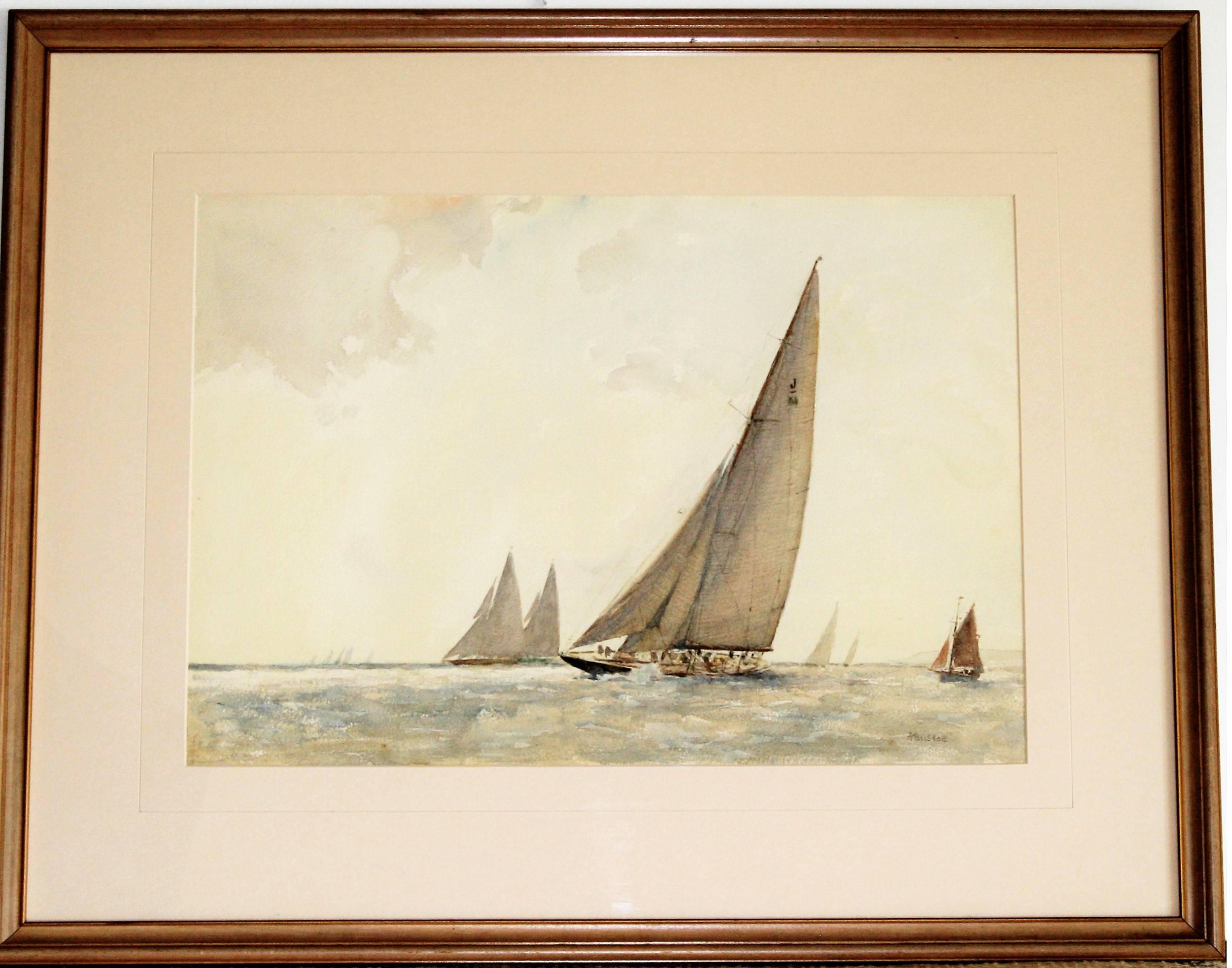
![[untitled] Street Scene with Fruit Vendor.](https://a.1stdibscdn.com/a_3312/1641486106885/sanchez_fruit_vendor_79509_master.jpg)